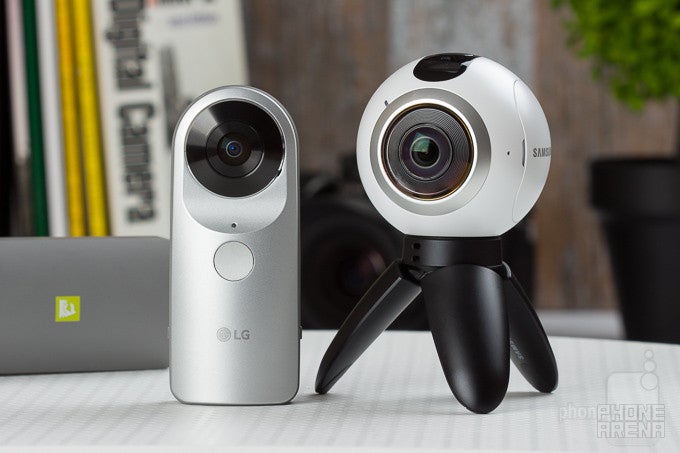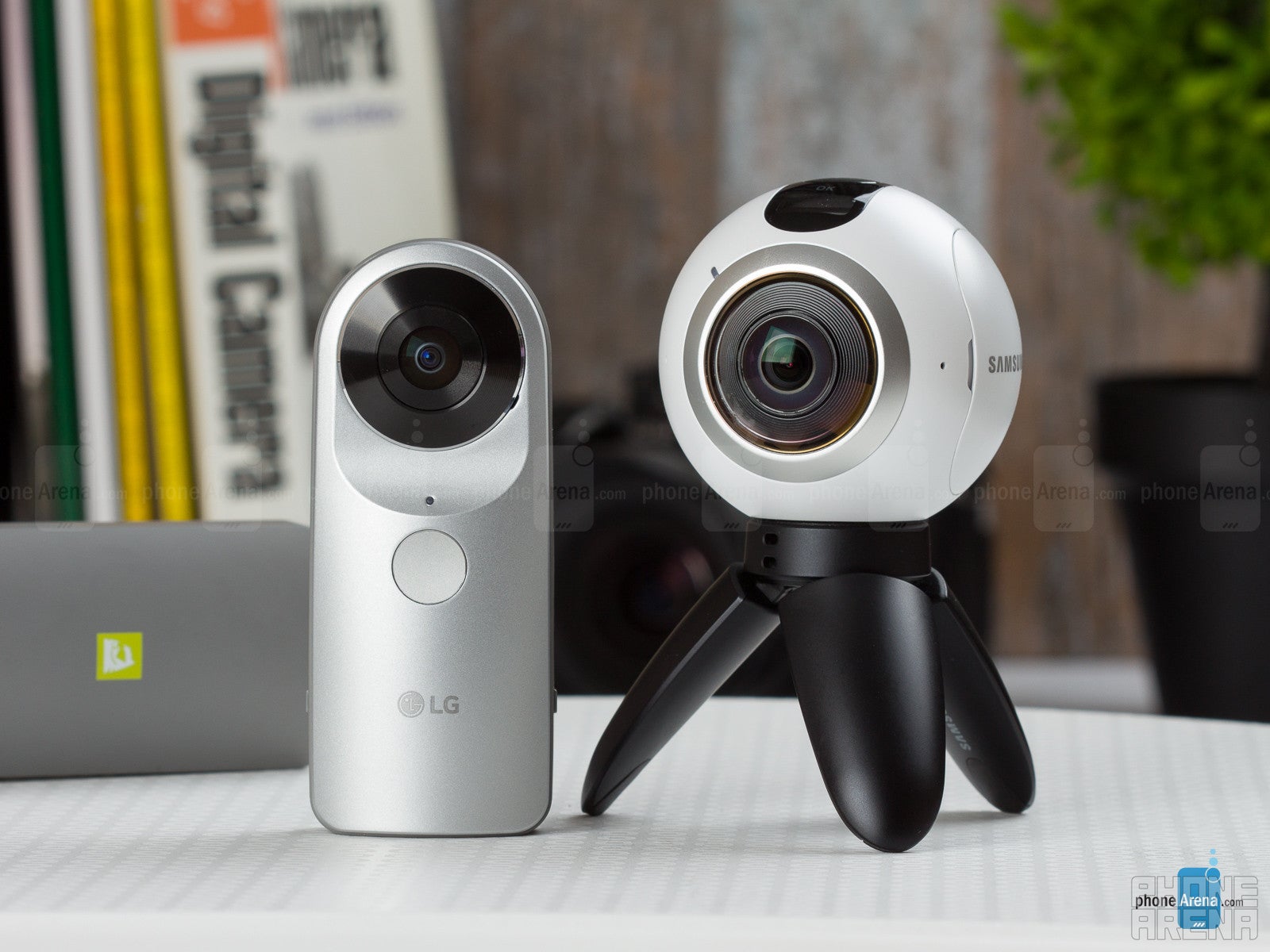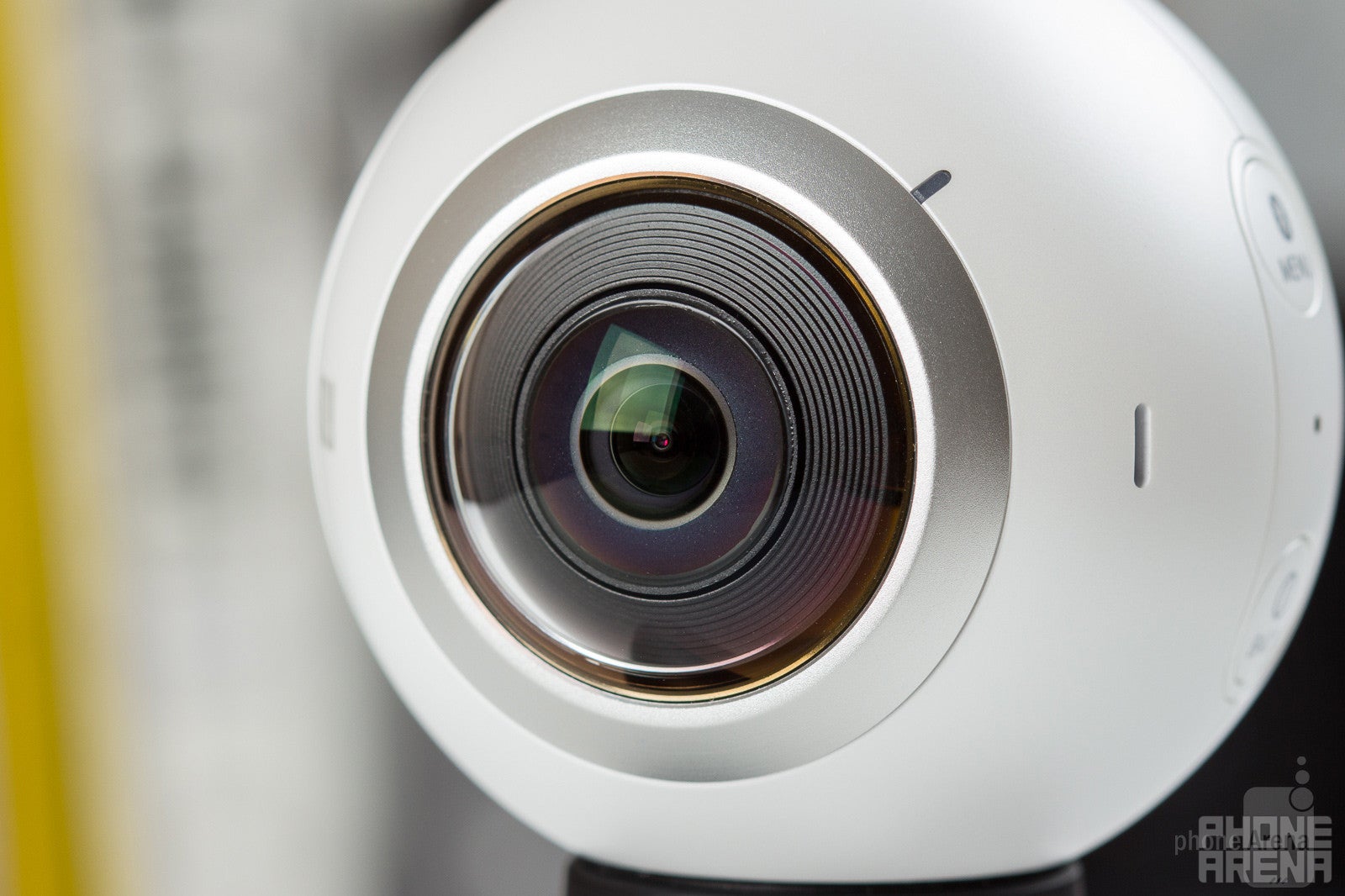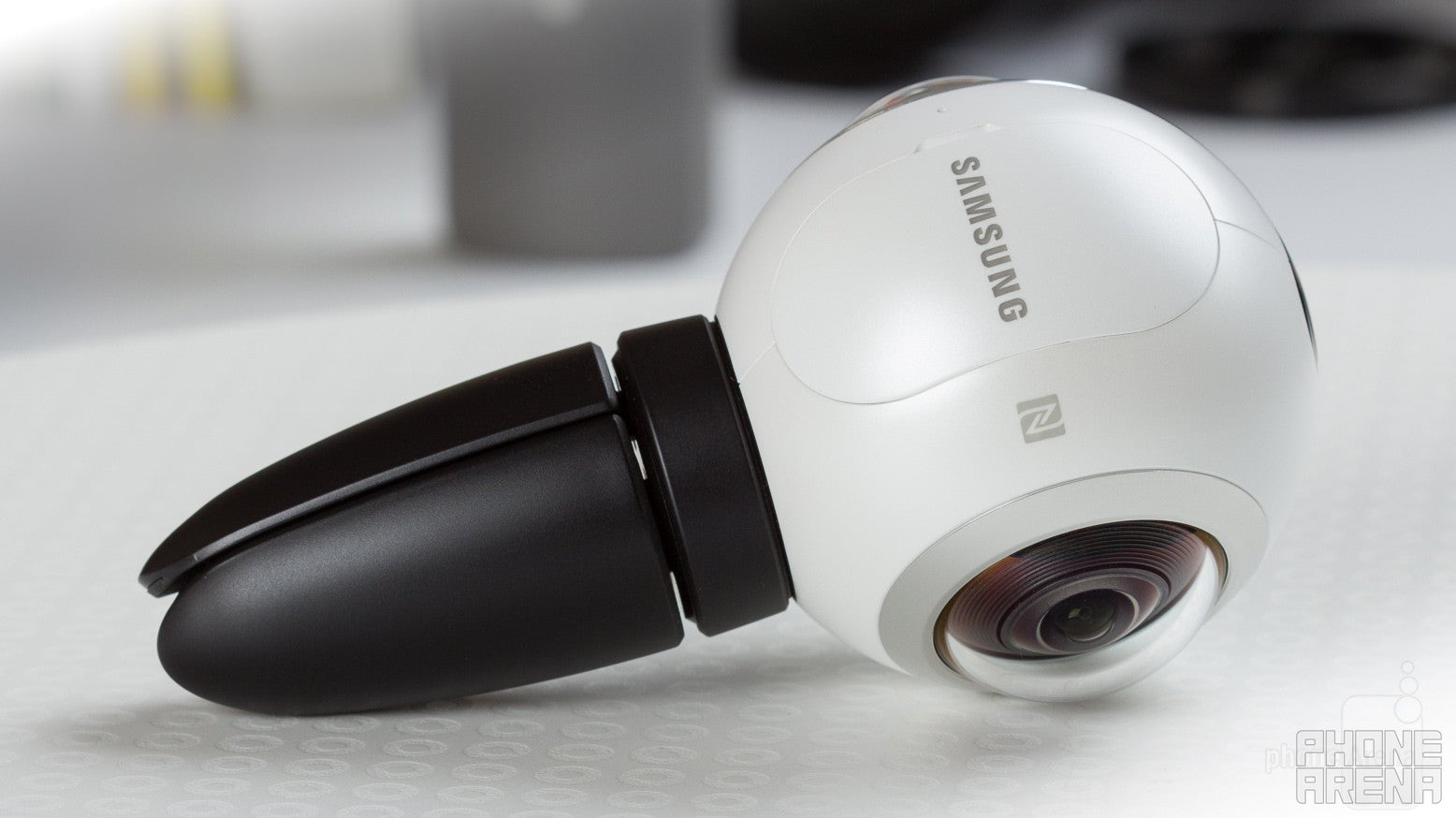Samsung Gear 360 vs LG 360 Cam: comparison

Introduction
One might be complaining all day long that mobile technology is not advancing at the same break-neck speed it did just a few years back.
And that could be true, but it does not mean there is no excitement in tech. Quite the opposite: there has been one new category that has exploded recently, and yes, it’s virtual reality. With the arrival of affordable and relatively good VR headsets like the Samsung Gear VR and Google Cardboard, it’s now easy to get immersed in content.
Up until recently, though, there was no way to actually create content yourself for those virtual reality experiences.
Two cameras have appeared at almost the same time, aiming to change all that: the LG 360 Cam and Samsung’s Gear 360. Both capture 360-degree videos and photos via a dual-lens camera system, with both lenses capturing more than 180° field of view. Are these first consumer-centric 360° cameras good enough right now, and which of the two is the better purchase? We dive in deeper to find out.
Design
There’s two aspects to design: good looks and practicality.
The looks department is important, but it’s arguably not the fundamental criteria by which one should judge a camera. Still, the Gear 360 is our favorite in terms of looks: the white sphere with its spread-out tripod legs looks like a cute alien, and it’s definitely more eye-catchy and noticeable than the greyish, under-the-radar LG 360 Cam. Both are built well and put together solidly, but the Gear 360 has a more substantial weight and heft, both of which we consider an advantage for a camera that is expected not to fall down at a gust of wind’s notice. The Gear 360 is also splash-proof, which is a definite plus for those who would get closer to water with their videos and images. However, its IP53 rating (the same as on the HTC 10 phone, for instance) will not fully protect it from water, so you should definitely not submerge the spherical camera in water or take it with you in the shower.
Then, there is practicality: the single button on the LG 360 Cam is an example in that regard. Positioned right where your thumb resides, it’s extremely convenient and quick to press. The LG 360 Cam itself is fast to start and has just two modes: short press the button to take a picture, and long-press it to start video. A sound notification / acoustic prompt lets you know whether you’ve taken a picture or started recording video. Convenient and absolutely great for impromptu shooting.
The Samsung Gear 360, on the other hand, is far less practical. Its spherical form looks cool, but also makes it much more likely that you will touch one or both lenses with your fingers and stain it. Its shutter button is way up top, and you have to stretch your fingers and shuffle the cam in your hand just to reach it. Plain inconvenient! The camera also has four shooting modes and that might be a bit of an excess complexity for some who want to quickly start a video or take a picture. In contrast to the LG camera, there is no shortcut for video or image recording on the Gear 360, and it takes a few clicks to find the right mode:you have to be looking at the camera’s tiny screen, while on the LG rival you can just shoot without ever looking or thinking.
Both cameras come with a standard tripod mount screw on the bottom (you have to remove the built-in mini tripod on the Gear 360 to see it), and that’s great. This way, you can attach the camera to a tripod, a bike helmet, or other mounts.
Ease of use, companion apps and phone compatibility

You don’t really need a companion app that acts as a viewfinder with a 360 camera. Still, there is an official one for both phones. Here is the Play Store download link for both companion apps:
LG 360 CAM Manager
Samsung Gear 360 Manager
You can control settings on both, but the Samsung one also goes that extra mile: it provides access to white balance controls, HDR mode and you can even adjust ISO, remove wind noise, and autocorrect shaky videos.
However, in order to get the stitched and final 360° footage on the Gear 360, you would need a Samsung Galaxy phone (only the Galaxy S6, S6 edge, S6 edge+, Note 5, S7, or S7 edge would work). The processing of the 360-degree footage is done on the phone, and not the camera itself.
The LG 360 Cam, on the other hand, does it all by itself for images. You can just pull out the microSD card and get final 360° images right away. For videos, it still requires your phone to stitch it together, but it is not limited to just one phone make or model.
Put simply, only the LG 360 Cam can be used standalone, without ever needing a phone, while the Samsung Gear 360 relies on not just any phone, but the latest Galaxies for its 360° images.
Sensors, lenses and specs comments
In technical terms, the Samsung Gear 360 features two 15-megapixel sensors with f/2.0 fish-eye lenses on top of them. The field of view on each of these lenses is 180°, and you can also use them separately if you wish. We found that using a single lens is also quite neat: this way, you can use the Gear 360 as a GoPro of sorts, capturing a wide angle of view (but again, don’t forget that the cam is not waterproof).
The LG 360 Cam, on its part, comes equipped with dual 13-megapixel sensors with lenses that have an even wider, 200° field of view. Here you can also choose to record with just one camera on (for 180-degree video), or with both (for 360-degree video).
In terms of audio, the Samsung Gear 360 has two microphones on one side, while the LG Cam 360 features 3 microphones – two up front and one on the back.
Image quality

Image and video quality are the two principle factors when deciding whether a camera is good. Even though the sheer effect of 360 capture is nice and novel, things like color reproduction, sharpness and the lack or presence of artifacts remain crucially important.
When comparing the LG Cam 360 against the Samsung Gear 360, we can easily conclude that the quality from the Samsung Gear 360 is far superior. Samsung’s orb manages to put together images with very little stitching artifacts, to the point where it’s often hard to see where the two pictures from the two cameras overlap. Not so with the LG Cam 360: stitching lines have very visible change in exposure and a loss of detail. On the whole, images captured on the LG camera appear much less sharp than, ideal with soft and mushy detail.
This is especially evident in the crops that we provide, where you can see exactly how much detail is lost on the LG camera.
LG 360 Cam gallery
Samsung Gear 360 gallery
Sharing 360 images and video is still not a trivial task: major services like Facebook, Google Photos, Flickr and YouTube do support the format, but if you want to embed a 360 image into your website, currently, you need to use a paid service to get that embed code.
We also shot images at night, but keep in mind that these cameras are not particularly good in those conditions. At night, images turn out way too blurry and barely usable on both cams, so you’d need a more expensive rig if you’re dreaming of shooting night 360 images.
Keep in mind that the resolution for 360° photos on Samsung Gear 360 images is 7,200 x 3,600 pixels, while on the LG Cam 360, it’s 5,660 x 2,830 pixels.
Practically the same applies for video: the quality of recorded footage is much sharper and more pleasing on the Samsung Gear 360.
One important thing to keep in mind: inexplicably and frustratingly, Samsung has decided to set the default for video recording on the Gear 360 to 2K rather than 4K. You have to manually go into Settings > Video size, and there select 3840 x 1920 as the video resolution, or otherwise, you would only get the default 2560 x 1280 footage. The LG 360 Cam has the latter resolution as well, but it cannot go up to 4K video as the Gear 360.
The Samsung Gear 360 also has two additional video modes: it can record 360-degree timelapses and an obscure looping video function. Looping video saves your video files in intervals: for instance, you can choose a 5-minute video recording session, and then the phone would save your video in 1 minute sessions. When you reach the 5-minute limit, it will automatically erase the first one-minute session and continue recording until you press the stop button. You can also record 30 or 60 minutes, as well as ‘Max’ storage (until you run out of memory), and then the saves happen every 5 minutes rather than every 1 minute. The idea is to make best use of space, so you don’t go over a certain limit.
How to save and upload 360 photos
Photos and videos from the Gear 360 first have to be processed within the Samsung Gear 360 application on a Galaxy phone, and only then you can save them as 360° panoramas that only then can be uploaded as 360 content to services like Google Photos and Facebook that support the format.
Keep in mind that you cannot do the actual stitching for a full 360 video or photo on just any phone: it has to be the Galaxy S6, S6 edge, S6 edge+, Note 5, S7, or S7 edge.
Much more conveniently, photos and videos from the LG 360 Cam come out stitched out right out the gate, so you can use the camera stand-alone, without it requiring that you buy a particular brand or make of a phone. Unfortunately, while that’s convenient, we found that the stitching itself is not particularly well executed and you can see stitching artifacts right where the two images are connected.
Battery life

The Gear 360 also has a tiny screen on top, and while we find it to be a mostly useless feature on a 360-degree camera, it comes in handy when you have to check your battery level. The LG Cam 360 is much more obscure with its battery levels, and that could be confusing.
Battery life is not spectacular on either. Our rough estimate is that you can get a bit more than an hour of video recording on a single charge with both.
Conclusion

Should you buy a 360 camera in the middle of 2016, just as the first consumer grade cameras in this category appear? For those who have dreamt of 360 panoramic pictures, the answer is a definite yes. If you want to use this footage on a more professional level and have high expectations for image quality, though, you should know that the two cameras reviewed here—the LG 360 Cam and Samsung Gear 360—are not professional-grade shooters.
The big difference between the two is in both price and performance: Samsung is asking $370 for the Gear 360, while LG’s 360 Cam is sold for about half that price at $200.
The price difference is well reflected in the actual performance: the alien-looking orb of a cam that is the Gear 360 captures much better-looking images with excellent exposure, good colors, and very little in terms of stitching artifacts. Its shutter button is placed in a weird and annoying position on top, and it’s only compatible with Samsung phones (which is a significant limitation), but for all else, this camera delivers more than enough in terms of performance.
The LG 360 Cam is the more discreet and faster to use one of the two, but image and video quality from it is a disappointment. Sure, it’s still cool to shoot 360 content with it, but don’t expect anyone to be blown away by the image quality.
If we were to pick a 360 cam at the moment, the Samsung Gear 360 is the obvious recommendation, whereas the LG 360 Cam comes with too many image quality compromises that could ruin the joy of your 360-degree experiments.










Things that are NOT allowed: